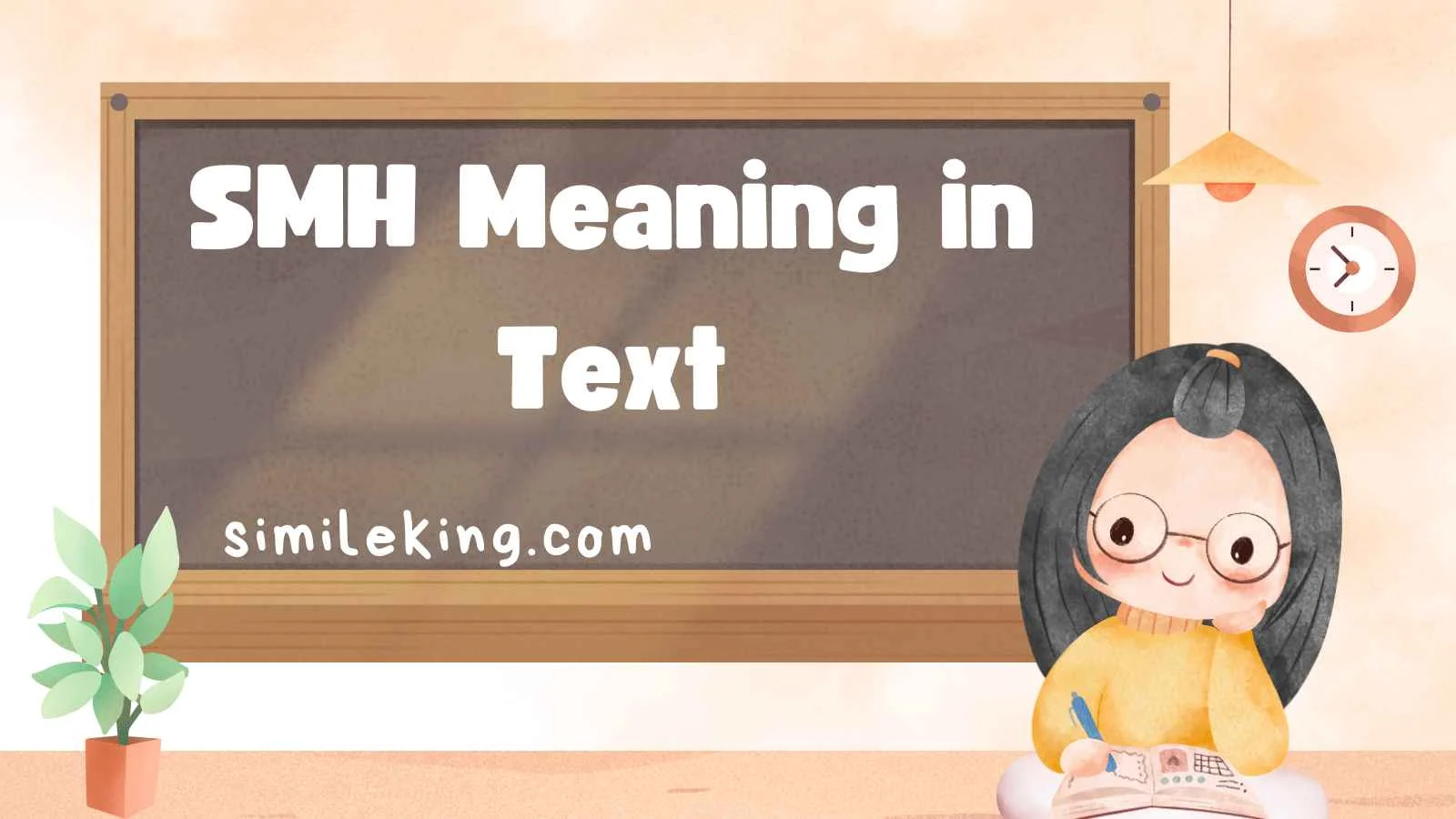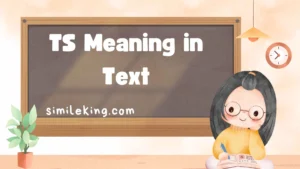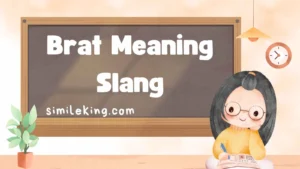In the ever-evolving world of digital communication, acronyms and shorthand expressions dominate texting, social media, and online conversations.
One of the most commonly used and often misunderstood acronyms is “SMH.” If you’ve seen it in chats, tweets, or comment sections and wondered what it means—or how to use it properly—you’re not alone.
This article offers the most advanced and up-to-date exploration (2025 edition) of SMH meaning in text, its origins, variations, tone, and suitable alternatives depending on context.
By the end, you’ll know exactly how and when to use it, how to avoid misunderstandings, and what to say instead if you want to sound polite, professional, or casual.
What Does SMH Mean in Text?
SMH stands for “Shaking My Head.”
It is used when someone wants to express:
- Disbelief (when something is unbelievable or shocking)
- Disappointment (when someone does something foolish or frustrating)
- Frustration or annoyance (when words are not enough to show irritation)
- Disapproval (to non-verbally signal “That’s ridiculous” or “I can’t believe this”)
In essence, SMH is an emotional response without needing a full explanation. Instead of writing a long message about how you feel, you can simply type “SMH” and convey the same disapproving tone instantly.
The Evolution of SMH (Why 2025 Usage is Different)
When SMH first entered online slang, it was mainly used in chatrooms and early social media around 2004–2005. Back then, it was straightforward: a short way to show you were shaking your head at someone’s nonsense.
But in 2025, the meaning of SMH has expanded:
- More expressive than ever: Paired with emojis (🙄🤦♂️🤷♀️), SMH adds emotional weight.
- Cross-platform popularity: From X (Twitter) to TikTok comments, Instagram captions, and even professional Slack chats, SMH is everywhere.
- Nuanced tones: It no longer only signals disapproval—it can also show amusement, sarcasm, or lighthearted disbelief depending on context.
This means you need to understand how SMH changes tone in different settings to avoid miscommunication.
SMH in Different Contexts

The brilliance of SMH lies in its adaptability. It doesn’t always mean the same thing—it depends on where you use it, who you’re talking to, and what tone you intend. Let’s break it down:
1. Casual Conversations with Friends
Here, SMH usually conveys playful annoyance or disbelief.
- Example: “You really ate an entire pizza by yourself? SMH 😂”
Tone: Light, teasing, not offensive.
2. Professional Settings (Slack, Emails, Workplace Chat)
Using SMH at work is tricky—it can seem unprofessional if not used carefully. In professional chats, SMH should be avoided unless the culture is informal and emoji-friendly. Instead, use alternatives (explained below).
- Example: “The server went down again during peak hours… SMH.”
Tone: Mild frustration without being too aggressive.
3. Social Media (X, TikTok, Instagram)
On social media, SMH is a shorthand for public disapproval, sarcasm, or humor.
- Example: “Influencers promoting fake giveaways… SMH 🤦♂️”
Tone: Strong disapproval, sometimes mixed with humor.
4. Family Chats or Generational Differences
Older family members may misunderstand SMH, reading it as “so much hate” or something negative. When texting parents or grandparents, clarify or replace it with a clearer phrase.
- Example: “You forgot your wallet again? SMH.”
(Might confuse someone not familiar with texting slang.)
Tone: Risk of miscommunication—use alternatives.
SMH Meaning in Text Slang
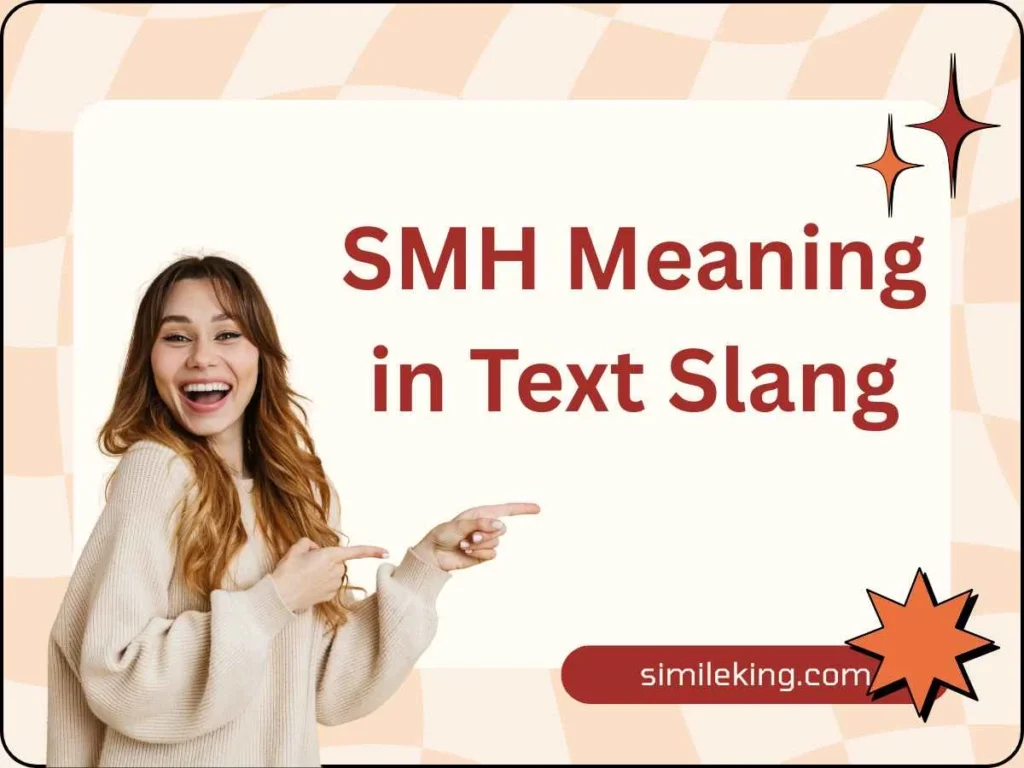
Q: What does SMH mean in text slang?
A: In text slang, SMH stands for “Shaking My Head.” It’s used to show disapproval, disbelief, or disappointment about something someone said or did. For example, if a friend cancels plans last minute, you might reply, “SMH, I knew this would happen.”
SMH Meaning in Text from a Guy
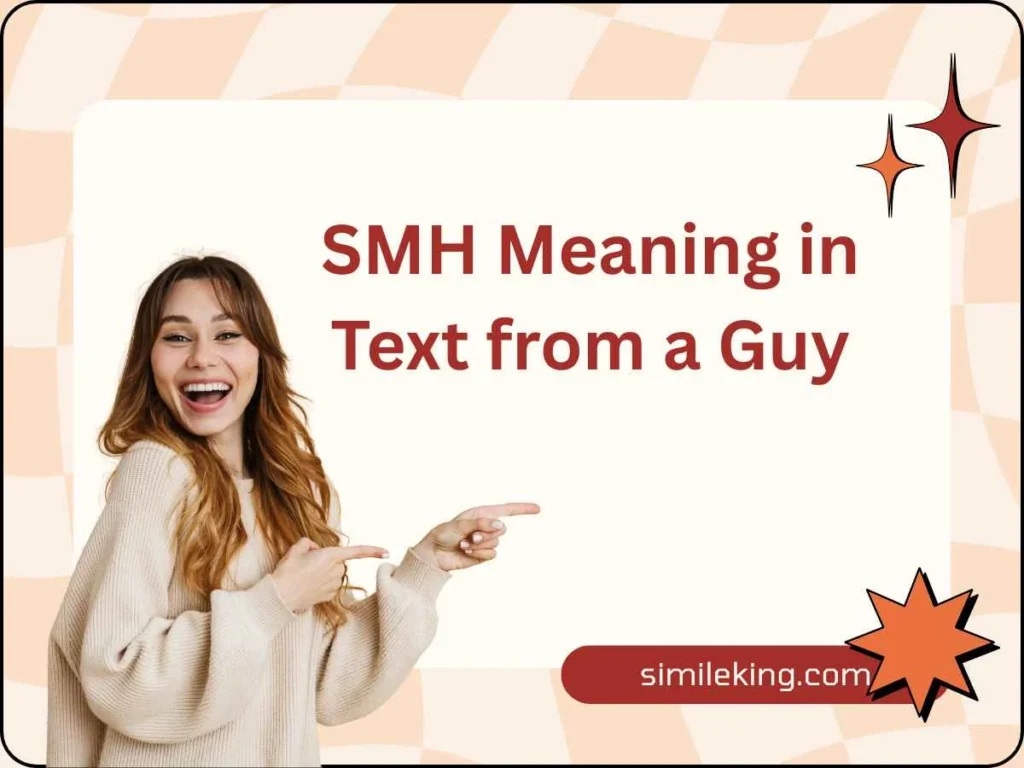
Q: What does SMH mean in text when a guy sends it?
A: When a guy texts SMH, it usually means he’s expressing frustration, annoyance, or disbelief. It doesn’t necessarily carry a romantic meaning—it’s more about his reaction to a situation. For instance, if he hears drama in a group chat, he might text, “SMH, that’s crazy.”
SMH Meaning in Text from Girl
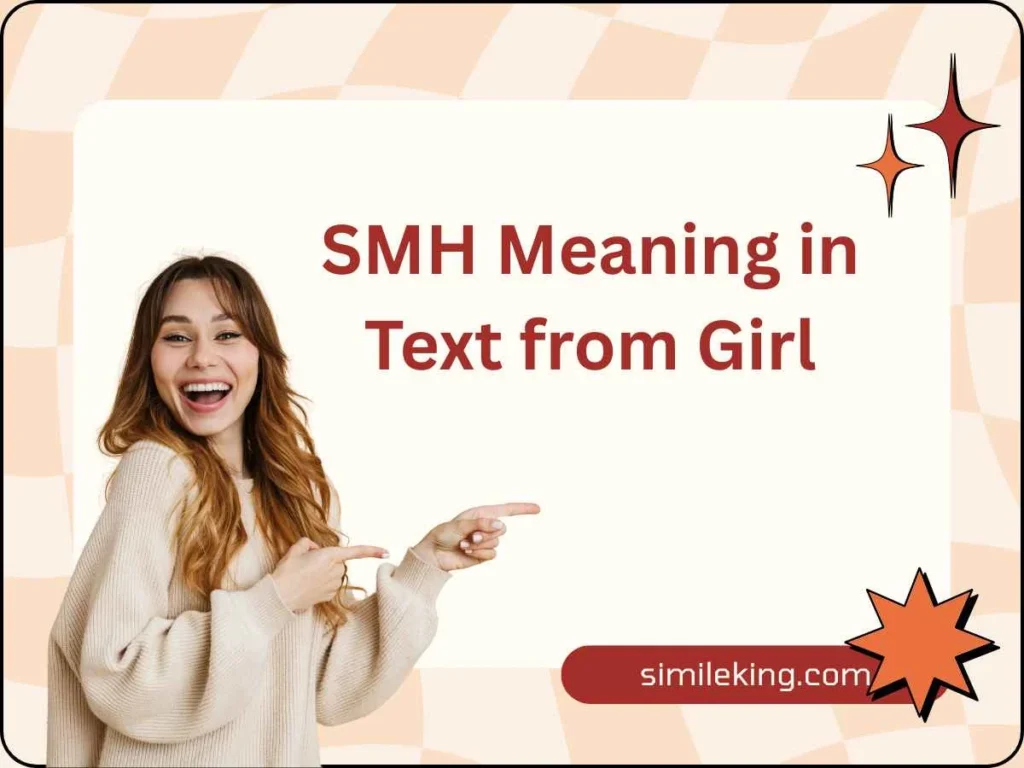
Q: What does SMH mean in text when a girl uses it?
A: When a girl texts SMH, it generally has the same meaning as when anyone else uses it: shaking my head in disappointment or disbelief. Depending on the context, it could also carry a playful tone, like teasing a friend: “You forgot again? SMH 😂.”
SMH Meaning in Text Message
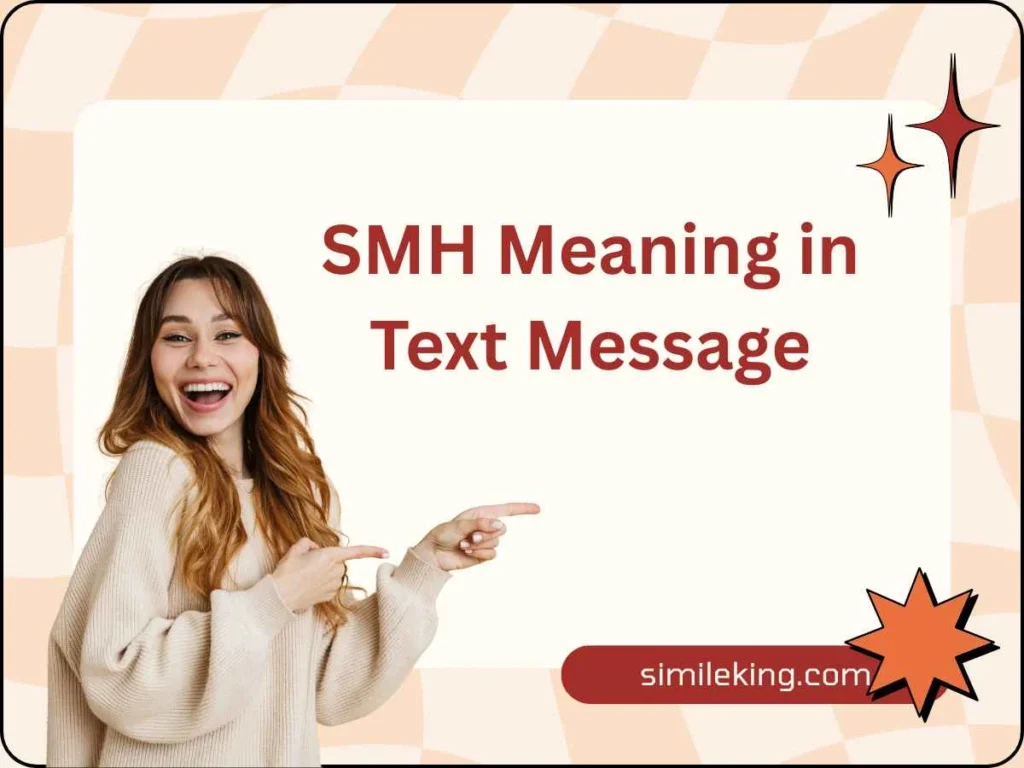
Q: What does SMH mean in a text message?
A: In text messages, SMH is shorthand for showing disbelief or judgment. People use it to react quickly without typing a full sentence. Example: “He really showed up late again… SMH.”
SMH Meaning in Text Snapchat
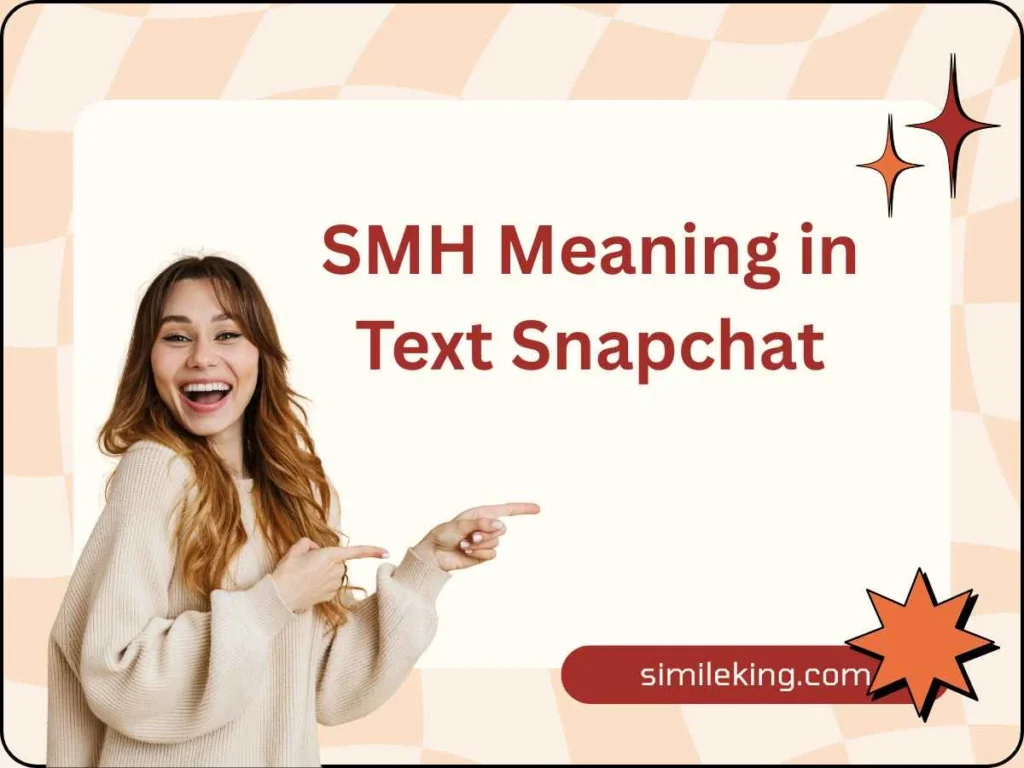
Q: What does SMH mean on Snapchat?
A: On Snapchat, SMH works the same as in regular texting—it’s a quick reaction to something shocking, funny, or disappointing. For example, if someone posts a silly snap, a friend might reply with “SMH 😂.” It’s often paired with emojis for extra effect.
SMH Meaning in Text Instagram
Q: What does SMH mean in Instagram comments or DMs?
A: On Instagram, SMH is often used in comments or DMs to react to posts, reels, or stories. It’s a shorthand way of saying “That’s unbelievable” or “I can’t believe this.” Example: commenting on a funny meme with “Too real… SMH.”
Polite, Professional, and Casual Alternatives to SMH
Since SMH can sometimes sound harsh or too casual, here are refined alternatives for different tones:
Polite Alternatives
- “I can’t believe this happened.”
- “That’s really surprising.”
- “Oh no, that’s disappointing.”
Professional Alternatives
- “This is concerning.”
- “That’s unfortunate.”
- “I find this hard to understand.”
Casual Alternatives
- “Bruh…”
- “Wow, really?”
- “LOL, unbelievable.”
Each alternative softens or sharpens the tone depending on how formal or relaxed you want to sound.
10 Powerful Examples of SMH in Real Conversations (2025 Edition)
Here are ten examples across different contexts to show how SMH can be used effectively:
- Friendship Chat
A: “I stayed up until 5 AM watching cat videos.”
B: “SMH 😂 you’re impossible.” - Professional Work Chat
“The report deadline was missed again… SMH. We really need better planning.” - Social Media Sarcasm
“Politicians blaming each other instead of solving problems… SMH.” - Disappointment in Family Chat
“You forgot Grandma’s birthday again? SMH 😔” - Playful Banter
A: “I texted my crush and accidentally sent it to my boss.”
B: “SMH bro, that’s legendary.” - Online Gaming
“Our teammate rage quit in the first round… SMH.” - Serious Criticism
“People still spreading fake health advice online… SMH.” - Lighthearted Disbelief
“You bought another pair of sneakers? SMH 🤣” - Group Chat Humor
“He said pineapple belongs on every pizza. SMH.” - Frustration in News Comments
“Another data breach from a major company… SMH.”
These examples show the versatility of SMH—it can be humorous, sharp, or genuinely critical depending on tone and context.
Choosing the Best Alternative: Tone Matters
The key to using SMH (or its alternatives) effectively is matching tone with audience:
- With friends: SMH works perfectly, often with emojis.
- At work: Use professional alternatives instead of SMH unless culture allows slang.
- On social media: SMH conveys quick disapproval and works well for comments.
- With older relatives: Avoid SMH—use polite full phrases for clarity.
Why SMH Still Dominates Digital Language in 2025
Despite new slang appearing constantly, SMH has remained powerful for over 20 years. Why?
- Simplicity – Just three letters capture a full emotion.
- Universality – Works across cultures, languages, and platforms.
- Adaptability – Can be serious, playful, sarcastic, or disappointed.
- Brevity – Perfect for fast-paced texting and short-form platforms like TikTok and X.
Final Thoughts
In 2025, SMH is more than just “shaking my head.” It’s a flexible tool for expressing disbelief, frustration, disappointment, or humor across text, social media, and professional chat. However, tone and context matter—what works in a casual chat may feel unprofessional in a work email.
By knowing what SMH really means, how to use it wisely, and what alternatives to choose, you’ll avoid miscommunication and come across as clear, thoughtful, and in tune with modern digital language.


